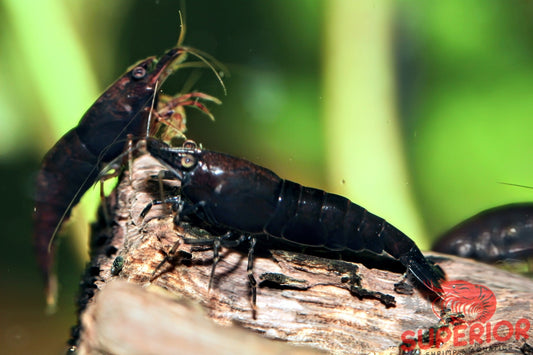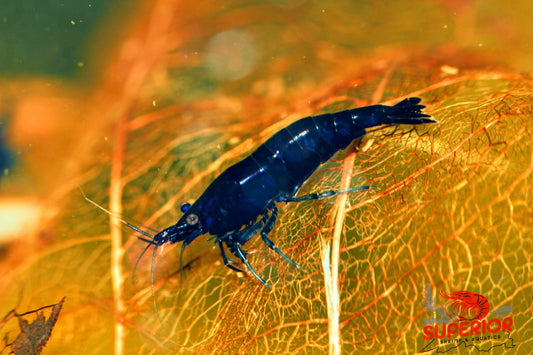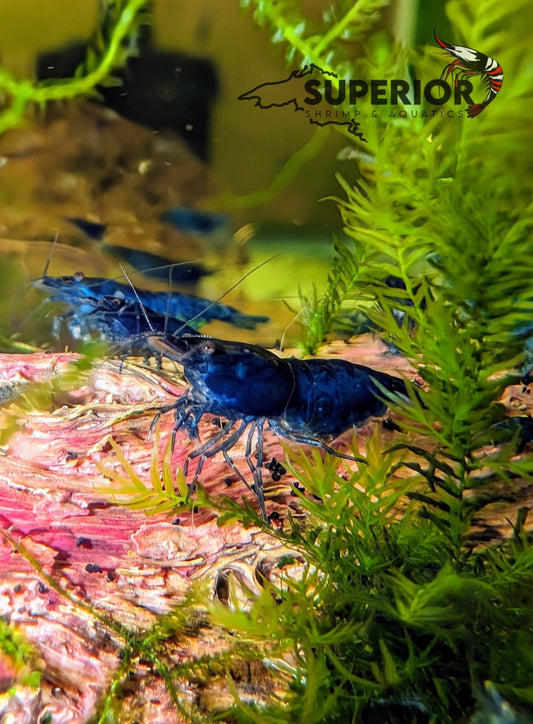Introduction: the moss that launched a thousand aquariums
Step into almost any shrimp keeper’s tank and you’ll see the tangled, emerald fronds of Java Moss. It clings to wood, drapes over stones, and forms dense, cloudlike mats where shrimplets weave in and out. Universally adaptable and forgiving, Taxiphyllum barbieri is the moss that made planted shrimp tanks possible for beginners and veterans alike. It is more than an ornament—it is shelter, food, and filtration rolled into one.
Origins and taxonomy
Java Moss is native to Southeast Asia, carpeting riverbanks, wetlands, and shaded stones. For decades it was misidentified as Vesicularia dubyana, but closer botanical study clarified that the moss in the aquarium trade is Taxiphyllum barbieri. Unlike Christmas Moss (Vesicularia montagnei), which grows in tidy fronds, Java Moss spreads in looser mats that are forgiving of water quality and lighting fluctuations.
Morphology and growth
Java Moss grows as branching stems covered in tiny overlapping leaves. It does not root but clings to surfaces with rhizoids. Under high light and CO₂ it forms lush, dense mats; under low light it becomes looser but still survives. This versatility is why it appears in everything from low-tech shrimp jars to high-end aquascapes.
Growth rate vs. light intensity
Light Intensity → Low Medium High
Growth Rate ▓▓ ▓▓▓▓ ▓▓▓▓▓▓
Density loose moderate dense
Color duller bright vivid
Why aquarists use Java Moss
For shrimp keepers, Java Moss is indispensable. Its dense mats provide nurseries where shrimplets hide from predation, making it perfect for colonies of Neocaridina shrimp. Every frond collects biofilm, giving dwarf shrimp like Caridina and premium lines such as Blue Bolts a constant grazing surface. It also softens aquascapes by cloaking hardscape and balancing bold background plants like the Amazon Sword.
Compared with botanicals such as Lotus Pods or Casuarina Cones, moss offers a living, renewable biofilm substrate. Pods and cones decompose to feed the system, while moss keeps producing indefinitely with trimming. Both strategies complement each other in creating a balanced shrimp habitat.
Care and husbandry
Java Moss grows under nearly any conditions but thrives best when parameters align with dwarf shrimp needs.
Water Parameter Reference Table
| Parameter | Ideal Range | Tolerances | Notes |
|---|---|---|---|
| Temperature | 70–78 °F (21–26 °C) | 60–82 °F | Slows below 65 °F; risks melting above 82 °F |
| pH | 6.5–7.5 | 5.5–8.0 | Neutral-slightly acidic preferred |
| GH | 4–10 °dGH | 2–20 | Needs Ca/Mg for structure |
| KH | 2–6 °dKH | 0–12 | Stable, slightly soft water ideal |
| Lighting | Low–medium | Low–high | Tolerates low; densifies under higher |
| CO₂ | Optional | Not required | Adds density, color |
For a deeper explanation of KH and buffering, see the Neocaridina Environment Guide.
Aquascaping with Java Moss
Moss can be tied to mesh to create living walls, fastened to driftwood from your Hardscape Collection to resemble bonsai trees, or spread across rock to form carpets. Because it propagates by fragmentation, any trimmings can be reused to expand coverage or shared with other hobbyists. Its adaptability makes it a staple in both display tanks and breeding setups.
Tankmates and compatibility
Java Moss pairs well with almost all nano-aquarium life. Neocaridina, Caridina, and show lines like Extreme Blue Bolts use it for cover and food. Ramshorn Snails graze its surfaces, while Assassin Snails lurk nearby for hunting grounds. Small fish such as rasboras, tetras, and guppies shelter in it, and bettas often use moss clumps as resting pads.
Maintenance and common issues
Java Moss grows steadily but benefits from regular trimming to prevent detritus accumulation. Under strong light it can attract hair algae; mitigate this with balanced fertilization, shrimp and snail grazers, and moderate trimming.
Trimming frequency by condition
Condition Trim Interval
Low light 8–10 weeks
Medium light 4–6 weeks
High light + CO₂ 2–3 weeks
Comparison with other mosses
Compared to Christmas Moss (Vesicularia montagnei), which grows in layered fronds, and Weeping Moss (Vesicularia ferriei), which cascades downward, Java Moss is looser and more versatile. Its tolerance for low light and varying parameters makes it the moss of choice for most shrimp tanks.
Ethical sourcing
Much of the moss in the trade is now propagated via tissue culture, which ensures it is free of algae and pests. Encourage aquarists to purchase cultured moss from reputable suppliers. In aquascapes, combine moss with Lotus Pods or other pieces from your Botanicals Collection for a complete, naturalistic setup.
Shop the essentials
Java Moss (Taxiphyllum barbieri)
Lotus Pods
Casuarina Cones
Neocaridina Shrimp
Caridina Shrimp
Blue Bolt Shrimp
Extreme Blue Bolt Shrimp
Ramshorn Snails
Hardscape Collection
Footnotes and sources
[1] He, S. et al. (2010). Clarification of Taxiphyllum barbieri vs. Vesicularia dubyana. Aquatic Botany.
[2] Barth, B. et al. (2015). Bryophyte adaptations in aquatic ecosystems. Journal of Bryology.
[3] Superior Shrimp & Aquatics. Neocaridina davidi Guide.
[4] Superior Shrimp & Aquatics. Neocaridina Environment Guide.
[5] Superior Shrimp & Aquatics. Assassin Snail Guide.
[6] Superior Shrimp & Aquatics. Lotus Pod Product Page.
[7] Superior Shrimp & Aquatics. Botanicals Collection.





